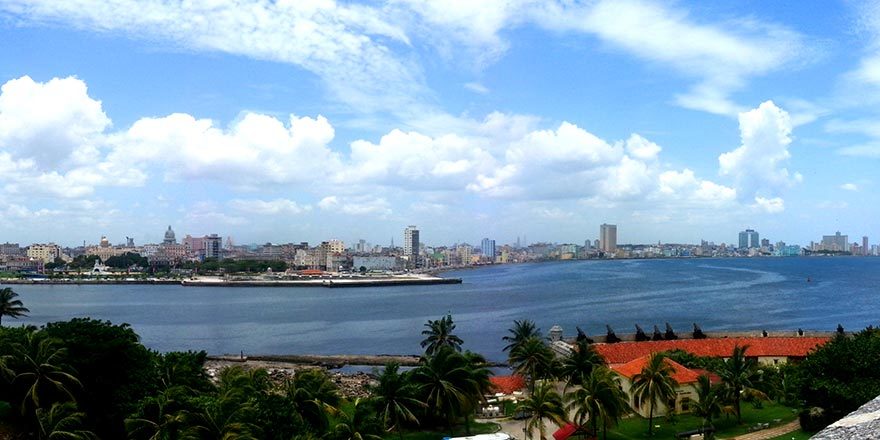Havana is a picturesque city characterized by buildings in different styles and colors. These town buildings have different kinds of styles – colonial, baroque, neoclassical, art nouveau, art deco and, modern. Furthermore, it is common to find Russian buildings from the Soviet influence period after the 1959 Revolution.
Visiting Havana is like traveling in time. According to experts, 80% of these city buildings are from the colonial period to the mid-twentieth century, so that Havana is currently a city with architecture older than 50 years.
Due to Havana’s almost five hundred-year existence, the city boasts some of the most diverse styles of architecture in the world, from castles built in the late 16th century to modernist present-day high-rises. The present condition of many buildings in Havana has deteriorated since the 1959 Revolution. Numerous collapses have resulted in injuries and deaths due to a lack of maintenance and crumbling structures.
Neoclassical
Neoclassicism was introduced into the city in the 1840s, at the time including Gas public lighting in 1848 and the railroad in 1837. In the second half of the 18th century, sugar and coffee production increased rapidly, which became essential in the development of Havana’s most prominent architectural style. Many wealthy Habaneros took their inspiration from the French; this can be seen within the interiors of upper-class houses such as the Aldama Palace built-in 1844. This is considered the most important neoclassical residential building in Cuba and typifies the design of many houses of this period with portals of neoclassical columns facing open spaces or courtyards.
In 1925 Jean-Claude Nicolas Forestier, the head of urban planning in Paris moved to Havana for five years to collaborate with architects and landscape designers. In the master planning of the city, his aim was to create a harmonic balance between the classical built form and the tropical landscape. He embraced and connected the city’s road networks while accentuating prominent landmarks. His influence has left a huge mark on Havana although many of his ideas were cut short by the great depression in 1929. During the first decades of the 20th century, Havana expanded more rapidly than at any time during its history. Great wealth prompted architectural styles to be influenced from abroad. The peak of Neoclassicism came with the construction of the Vedado district (begun in 1859). This whole neighborhood is littered with set back well-proportioned buildings.
Colonial and Baroque
Riches were brought from the colonialists into and through Havana as it was a key transshipment point between the new world and the old world. As a result, Havana was the most heavily fortified city in the Americas. Most examples of early architecture can be seen in military fortifications such as La Fortaleza de San Carlos de la Cabana (1558–1577) designed by Battista Antonelli and the Castillo del Morro (1589–1630). This sits at the entrance of Havana Bay and provides an insight into the supremacy and wealth at that time.
Old Havana was also protected by a defensive wall begun in 1674 but had already overgrown its boundaries when it was completed in 1767, becoming the new neighborhood of Centro Habana. The influence from different styles and cultures can be seen in Havana’s colonial architecture, with a diverse range of Moorish architecture, Spanish, Italian, Greek, and Roman. The San Carlos and San Ambrosio Seminary (18th century) is a good example of early Spanish-influenced architecture. The Havana cathedral (1748–1777) dominating the Plaza de la Catedral (1749) is the best example of Cuban Baroque. Surrounding it are the former palaces of the Count de Casa-Bayona (1720–1746) Marquis de Arcos (1746) and the Marquis de Aguas Claras (1751–1775).
Art Deco and Eclectic
The first echoes of the Art Deco movement in Havana started in 1927, in the residential area of Miramar. The Edificio Bacardi (1930) is thought to be the best example of Art-deco architecture in the city and the first tall Art Deco building as well, followed by the Hotel Nacional de Cuba (1930) and The Lopez Serrano building built-in 1932 by Ricardo Mira inspired by the Rockefeller Center in New York City. The year 1928 marked the beginning of the reaction against the Spanish Renaissance style architecture, Art Deco started in the lush and wealthy suburbs of Miramar, Marianao, and Vedado.
The city’s eclectic architectural sights begin in Centro Habana. The Central Railway Terminal (1912), and the Museum of the Revolution (1920) are examples of Eclectic architecture.
Modernism
Many high-rise office buildings, and apartment complexes, along with some hotels built in the 1950s dramatically altered the skyline. Modernism, therefore, transformed much of the city and is known for its individual buildings of high quality rather than its larger key buildings. Examples of the latter are Habana Libre (1958), which before the revolution was the Havana Hilton Hotel and La Rampa movie theater (1955).
Due to the economic crisis, the city displays destroyed buildings, but many of them, located on its main avenues, have received modest renovations which create a phenomenal colorful look.
This is because the Cubans like to be one of a kind. So since ancient times, houses have been built with different styles and if they look similar, so they are painted in different colors. This makes Havana a colorful city.
We invite you all to visit this beautiful city on a classic convertible car, where you can see a peculiar Havana from all points of view.
Tours on a convertible classic car in Havana
Source Wikipedia [Havana]




